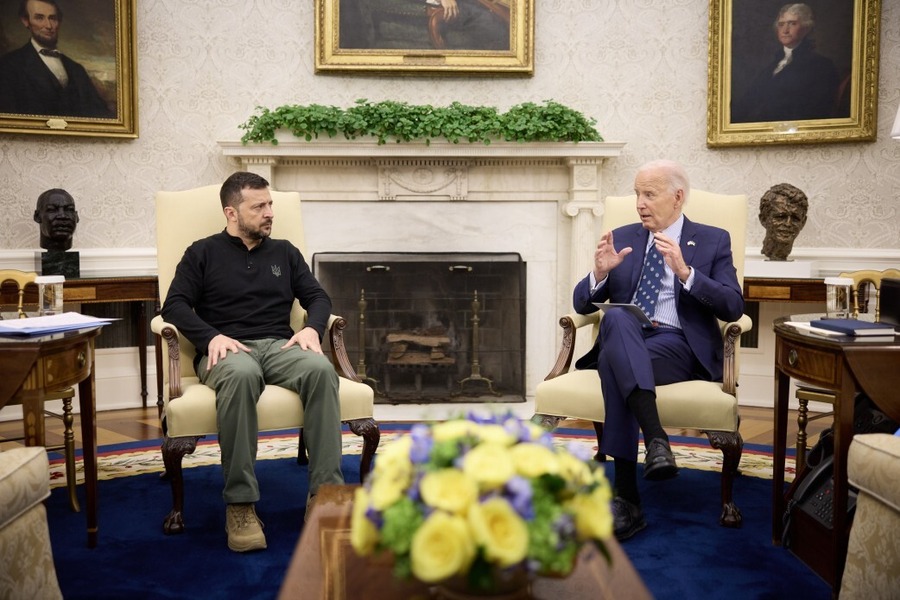Would the Corker-Kaine AUMF Authorize Military Strikes in Iran? A Response to Bobby Chesney
In a Lawfare post on April 25, Bobby Chesney criticizes a New York Times editorial that opined that the Corker-Kaine AUMF could be used to attack Iran or North Korea. Because this part of the editorial linked to my op-ed in Defense One, Chesney focuses on my analysis.
Published by The Lawfare Institute
in Cooperation With

In a Lawfare post on April 25, Bobby Chesney criticizes a New York Times editorial that opined that the Corker-Kaine AUMF could be used to attack Iran or North Korea. Because this part of the editorial linked to my op-ed in Defense One, Chesney focuses on my analysis. The op-ed primarily addressed other aspects of the AUMF, but it included one sentence about the bill’s potential to serve as pretext for attacking nation states:
And while the bill would not authorize the president to add nation-states to the list, it would permit an easy runaround: by characterizing strikes on countries where terrorists operate — or like Iran, are designated as state sponsors of terrorism — as sanctioned attacks on terror groups.
Chesney makes two points in rebuttal to this statement. First, he notes that the AUMF expressly prohibits designating nation states as “associated forces” (as my op-ed acknowledges), and he states, “There is no state-sponsor of terrorism exception to that prohibition. End of story, as far as the AUMF is concerned.”
I agree that the president cannot designate a nation as an “associated force” under the bill, regardless of whether it is a state sponsor of terrorism. But it doesn’t take much imagination to see how that prohibition could be evaded in practice. A strike inside such a country could be couched as an effort to disable the terrorist group that’s being sponsored. The administration would argue that the use of force in that instance was directed against the terrorist group, rather than the country supporting it.
Underlying Chesney’s argument, I think, is an assumption that there would be a visible distinction between “attacking a foreign government” (in his words) and attacking a terrorist group the government is supporting—such that the administration couldn’t get away with doing the former in the guise of doing the latter. If we were talking about an all-out military campaign to topple the Iranian government, that would clearly be true. But I worry much more about limited military strikes, designed to bully or intimidate rather than effect regime change. In such a scenario, the administration could target, say, weapons production facilities, under the claim that these materials could be making their way into the hands of terrorist groups.
To be clear, I think that would violate the intent of the bill’s authors. But I also think the text of the bill leaves the door wide open to such manipulation. Administration officials, lawmakers, and pro-war advocates would argue that the strikes fell within the four corners of the law. Whether they would be correct is a question of statutory interpretation that no court would (likely) ever reach.
Chesney’s second point is that the 2001 AUMF, which ostensibly governs current operations, has “no geographic constraints.” Accordingly, he concludes, “If there is an AUMF-covered group found in Iran, the legal (and diplomatic) constraints on the United States attacking it there will be much the same with or without this new legislation; the new bill is not more of a green light, in other words, than the status quo.”
The emphasis at the beginning of the sentence is mine, because that’s where the difference between the AUMFs lies. True, both AUMFs would in theory permit military strikes in Iran against groups covered by those AUMFs. But the Corker-Kaine AUMF would significantly expand that universe of groups in two ways.
First, the Corker-Kaine AUMF expressly authorizes the use of military force against the Islamic State and associated forces. The executive branch already considers the 2001 AUMF to cover the Islamic State as an “associated force,” on the basis of the group’s origin story as a successor to al-Qaeda in Iraq. But no president has yet argued that the 2001 AUMF covers not just associated forces, but forces associated with associated forces—i.e., groups two steps removed from al-Qaeda and the Taliban. The Corker-Kaine AUMF would allow military force against groups associated with the Islamic State (but not with al-Qaeda or the Taliban); the 2001 AUMF would not.
Second, the Corker-Kaine AUMF would give legal cover to a dangerously broad reading of “associated forces,” which could embolden the executive branch. Unlike the Corker-Kaine bill, the 2001 AUMF does not mention “associated forces.” The executive branch nonetheless reads the law to cover them, importing the law-of-war concept of “co-belligerency” that applies in wars between nation states. This is a questionable exercise, but assuming its legitimacy, the criteria for co-belligerency are less malleable than recent presidents seem to believe. When President Barack Obama pressed the 2001 AUMF into service against the Islamic State, most experts agreed that this was stretching the notion of “associated forces” beyond the breaking point.
The first part of the Corker-Kaine bill’s definition of “associated forces,” however, tracks the Obama administration’s stated definition—namely, the group has entered the fight “alongside” and is “co-belligerent with” a covered group—and the second part tracks the approach Obama seems to have taken with the Islamic State, authorizing the use of military force against any person or group that “has been” part of a designated organization or associated force and is engaged in hostilities. The bill could thus be read to ratify the executive branch’s sprawling interpretation.
That is worrisome legally, but also practically: as Chesney has noted elsewhere, "it is possible that codification might induce a more adventurous (and problematic) approach on the part of the executive going forward." If Congress is perceived to have blessed the expansion of military activities to loosely connected groups, the administration might pursue this approach more aggressively. That could include designating terrorist groups that operate inside Iran as "associated forces"—leading back to the same concerns about military strikes, purportedly against terrorist groups, intended to send a signal to Iran.
I’m particularly concerned about the potential for the administration, relying on this generous definition, to designate the Islamic Revolutionary Guard Corps (IRGC) as an "associated force." The IRGC is Iran’s primary military and security force, and military strikes against the IRGC would be war against Iran under another name. The administration, however, treats the IRGC as an entity unto itself, distinct from the Iranian government. Last fall, President Donald Trump levied sanctions on the IRGC—citing its support for the IRGC-Qods Force, a special forces unit of the IRGC, which in turn has been sanctioned for supporting Hizballah, Hamas, and the Taliban—and he came close to designating the IRGC a foreign terrorist organization. Again, I think a military strike against the IRGC would violate the spirit of the bill’s prohibition on designating nation-states, but I’m not at all sure it would violate the letter—and it’s highly unlikely any court would ever decide this question. As for the public, whether people support or oppose military action in Iran is (for the most part) unlikely to turn on a legal dispute about definitions within the AUMF.
For these reasons, I worry that the Corker-Kaine bill could be (mis)used to justify military strikes against Iran. That said, I certainly agree with Chesney that "[t]here’s plenty to debate about the Corker-Kaine AUMF" apart from that issue. (See this thought-provoking piece from Tess Bridgeman, for instance.) My op-ed focused primarily on Congress’s abdication of its war-making authority to the president, and the prospect of an endless war against groups of the president’s choosing. These remain my greatest concerns with the bill.


.jpg?sfvrsn=6cdd11de_5)


